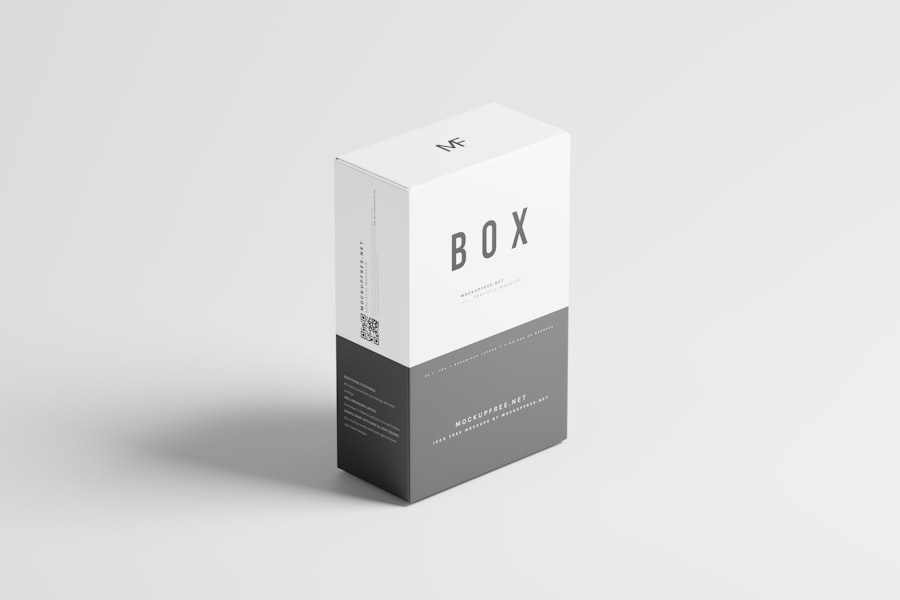The Skinner Box, a term derived from the experiments conducted by psychologist B.F. Skinner, represents a fundamental concept in behavioral psychology. In its simplest form, the Skinner Box is an enclosed environment where an animal, typically a rat or pigeon, can perform certain actions to receive rewards, such as food.
This setup allows researchers to observe how behavior can be shaped through reinforcement. You might find it fascinating that the principles behind the Skinner Box extend far beyond laboratory settings; they permeate various aspects of daily life, including education, marketing, and, most notably, social media. In essence, the Skinner Box illustrates the power of operant conditioning, where behaviors are modified through rewards and punishments.
When you engage with a platform that employs these principles, you may not even realize how your actions are being influenced. Each time you receive a notification or a like on your post, it serves as a reward that reinforces your behavior, encouraging you to return for more. This cycle of action and reward creates a compelling environment that keeps you engaged, often without your conscious awareness.
Key Takeaways
- The Skinner Box is a concept in psychology that involves operant conditioning through rewards and punishments.
- Social media platforms apply the Skinner Box concept by using variable rewards to keep users engaged.
- Variable rewards play a significant role in user engagement on social media platforms.
- Notifications and alerts are used to keep users engaged and active on social media platforms.
- Social comparison influences user engagement on social media platforms.
The Application of the Skinner Box in Social Media
Social media platforms have ingeniously adopted the principles of the Skinner Box to enhance user engagement and retention. When you scroll through your feed, you are essentially navigating a digital version of this box, where every interaction can lead to a reward. Each like, comment, or share acts as a reinforcement that encourages you to continue participating in the platform.
This design is not accidental; it is meticulously crafted to keep you coming back for more. You may notice that social media platforms often employ features that mimic the Skinner Box’s reward system. For instance, the algorithm curates content based on your previous interactions, ensuring that you encounter posts that are likely to elicit a response.
This personalized experience creates a sense of anticipation and excitement, as you never know when you might stumble upon something that resonates with you. The thrill of discovery is akin to pressing a lever in the Skinner Box, hoping for that rewarding treat.
The Role of Variable Rewards in Social Media Platforms

One of the most compelling aspects of the Skinner Box is the concept of variable rewards—rewards that are unpredictable and inconsistent. In social media, this translates to the likes and comments you receive on your posts. You might post something and receive an overwhelming response one time, while another post may go unnoticed.
This unpredictability keeps you engaged, as you are constantly seeking that next hit of validation. The allure of variable rewards can be particularly potent. You may find yourself checking your notifications repeatedly, hoping for that unexpected surge of likes or comments.
This behavior mirrors the actions of animals in a Skinner Box, who will continue to press a lever even when rewards are sporadic. The psychological thrill of not knowing when the next reward will come can create an addictive cycle that is hard to break.
The Use of Notifications and Alerts to Keep Users Engaged
| Metrics | Value |
|---|---|
| Number of notifications sent | 500 |
| Open rate of notifications | 60% |
| Click-through rate of notifications | 25% |
| Retention rate after receiving notifications | 70% |
Notifications and alerts serve as powerful tools in the social media landscape, designed to draw you back into the platform at any given moment. Each ping or buzz acts as a reminder that something is happening—someone has liked your photo, commented on your post, or tagged you in a story. These notifications are strategically timed to maximize your engagement and keep you connected to your online community.
You might find it interesting how these alerts tap into your natural curiosity and desire for social interaction. When you receive a notification, it triggers a response similar to that of an animal in a Skinner Box receiving a reward. The anticipation builds as you check your phone, eager to see what has transpired since your last visit.
This constant barrage of notifications creates an environment where you feel compelled to stay connected, often leading to prolonged periods of engagement.
The Influence of Social Comparison on User Engagement
Social comparison is another psychological phenomenon that plays a significant role in social media engagement. As you scroll through curated feeds filled with highlights from others’ lives, it’s easy to fall into the trap of comparing yourself to those around you. This comparison can lead to feelings of inadequacy or envy, prompting you to engage more with the platform in an attempt to measure up or showcase your own achievements.
You may find yourself posting more frequently or curating your content to present an idealized version of your life. This behavior is driven by the desire for validation and acceptance from your peers. The more you engage with social media in this way, the more entrenched you become in its cycle—constantly seeking approval while simultaneously comparing yourself to others.
This dynamic can create a feedback loop that keeps you returning to the platform for reassurance and affirmation.
The Impact of Personalization and Customization on User Behavior

Personalization and customization are key elements that enhance user experience on social media platforms. When you log in, algorithms analyze your past behavior to curate content tailored specifically for you. This personalized feed makes it easier for you to find content that resonates with your interests and preferences, increasing the likelihood that you’ll engage with it.
The impact of this tailored experience cannot be overstated. You may find yourself spending more time on platforms where content feels relevant and engaging. The more personalized your experience becomes, the more likely you are to return for additional interactions.
The Role of FOMO (Fear of Missing Out) in Social Media Addiction
FOMO, or the fear of missing out, is a powerful motivator that drives social media engagement. You may feel compelled to check your feeds regularly to ensure you’re not missing any important updates or events happening within your social circles. This fear can lead to compulsive behavior as you strive to stay connected and informed about what others are doing.
The impact of FOMO can be profound; it often leads to increased screen time and a heightened sense of anxiety when you’re away from your devices. You might find yourself scrolling through posts even when you’re busy with other activities, driven by the need to stay in the loop. This constant need for connection can create an unhealthy relationship with social media, trapping you in a cycle where you’re always seeking reassurance and validation from others.
The Influence of Social Validation and Likes on User Behavior
Social validation plays a crucial role in shaping user behavior on social media platforms. When you post content and receive likes or comments, it serves as a form of validation that reinforces your self-esteem and sense of belonging. Each like acts as a small reward, encouraging you to continue sharing and engaging with others.
You may notice how this validation can influence what you choose to post or share online. The desire for likes can lead you to curate content that aligns with popular trends or resonates with your audience’s preferences. This behavior reflects the principles of operant conditioning seen in the Skinner Box—where positive reinforcement encourages specific actions while discouraging others.
As you seek out validation through likes and comments, you become increasingly entrenched in the social media landscape.
The Role of Autoplay and Infinite Scroll in Maintaining User Engagement
Autoplay features and infinite scroll mechanisms are designed to keep you engaged for extended periods without interruption. When watching videos or scrolling through feeds, these features create an environment where content flows seamlessly from one piece to another, making it easy for you to lose track of time. You might find yourself caught in this endless cycle—one video leads to another, one post leads to another—until hours have passed without your realization.
This design mimics the Skinner Box’s reward system by providing continuous stimulation and engagement without requiring any effort on your part. The ease with which content is consumed can make it difficult for you to step away from the platform, reinforcing habitual usage patterns.
The Impact of Psychological Triggers and Persuasive Design in Social Media
Psychological triggers play a significant role in persuasive design within social media platforms. Designers leverage principles from psychology to create interfaces that encourage specific behaviors and interactions from users like yourself. These triggers can range from visual cues that draw your attention to strategic placement of buttons that prompt engagement.
You may not always be aware of these design choices; however, they significantly influence how you interact with social media. For instance, bright colors or eye-catching graphics can compel you to click on certain posts or advertisements. By understanding these psychological triggers, platforms can effectively guide your behavior while keeping you engaged within their ecosystem.
Strategies for Breaking Free from the Skinner Box of Social Media
Recognizing the influence of the Skinner Box on your social media habits is the first step toward breaking free from its grasp. One effective strategy is setting boundaries around your usage—designating specific times for checking notifications or limiting screen time can help reduce compulsive behavior. By creating intentional breaks from social media, you allow yourself space to engage with other activities that bring fulfillment outside the digital realm.
Another approach involves curating your feed intentionally; unfollowing accounts that contribute negatively to your self-esteem or provoke feelings of inadequacy can create a healthier online environment for yourself. Additionally, consider engaging in offline activities that promote connection and fulfillment—spending time with friends or pursuing hobbies can provide meaningful experiences that reduce reliance on social media for validation. By implementing these strategies and becoming more mindful of how social media affects your behavior, you can reclaim control over your online interactions and foster healthier habits moving forward.
The concept of the “Skinner Box” in social media refers to the way platforms are designed to keep users engaged through a system of rewards and reinforcements, similar to the operant conditioning chamber developed by B.F. Skinner. This psychological approach is often used to explain how social media can become addictive, as users are continuously drawn back by notifications, likes, and other forms of digital validation. For a deeper understanding of the psychological mechanisms at play in social media and their impact on behavior, you might find this related article insightful. It explores various psychological principles and their application in the digital age, providing a comprehensive look at how our online interactions are shaped by these underlying theories.
LEARN WHY Your Brain Isn’t Addicted to Likes; the Algorithm Gaslights You Daily, Hard.
FAQs
What is a Skinner Box?
A Skinner Box, also known as an operant conditioning chamber, is a device used in behavioral psychology to study animal behavior. It was developed by B.F. Skinner in the 1930s and 1940s.
How does a Skinner Box work?
A Skinner Box typically contains a lever or button that an animal can press to receive a reward, such as food or water. The box also includes sensors to record the animal’s behavior and responses.
What is the connection between a Skinner Box and social media?
The term “Skinner Box” has been used metaphorically to describe the addictive nature of social media platforms. It refers to the way these platforms use variable rewards and feedback loops to keep users engaged and coming back for more.
What are some examples of Skinner Box elements in social media?
Examples of Skinner Box elements in social media include notifications, likes, comments, and other forms of feedback that provide variable rewards and encourage users to continue using the platform.
What are the potential effects of Skinner Box elements in social media?
Some experts have raised concerns about the potential negative effects of Skinner Box elements in social media, including addiction, decreased attention span, and negative impacts on mental health.




